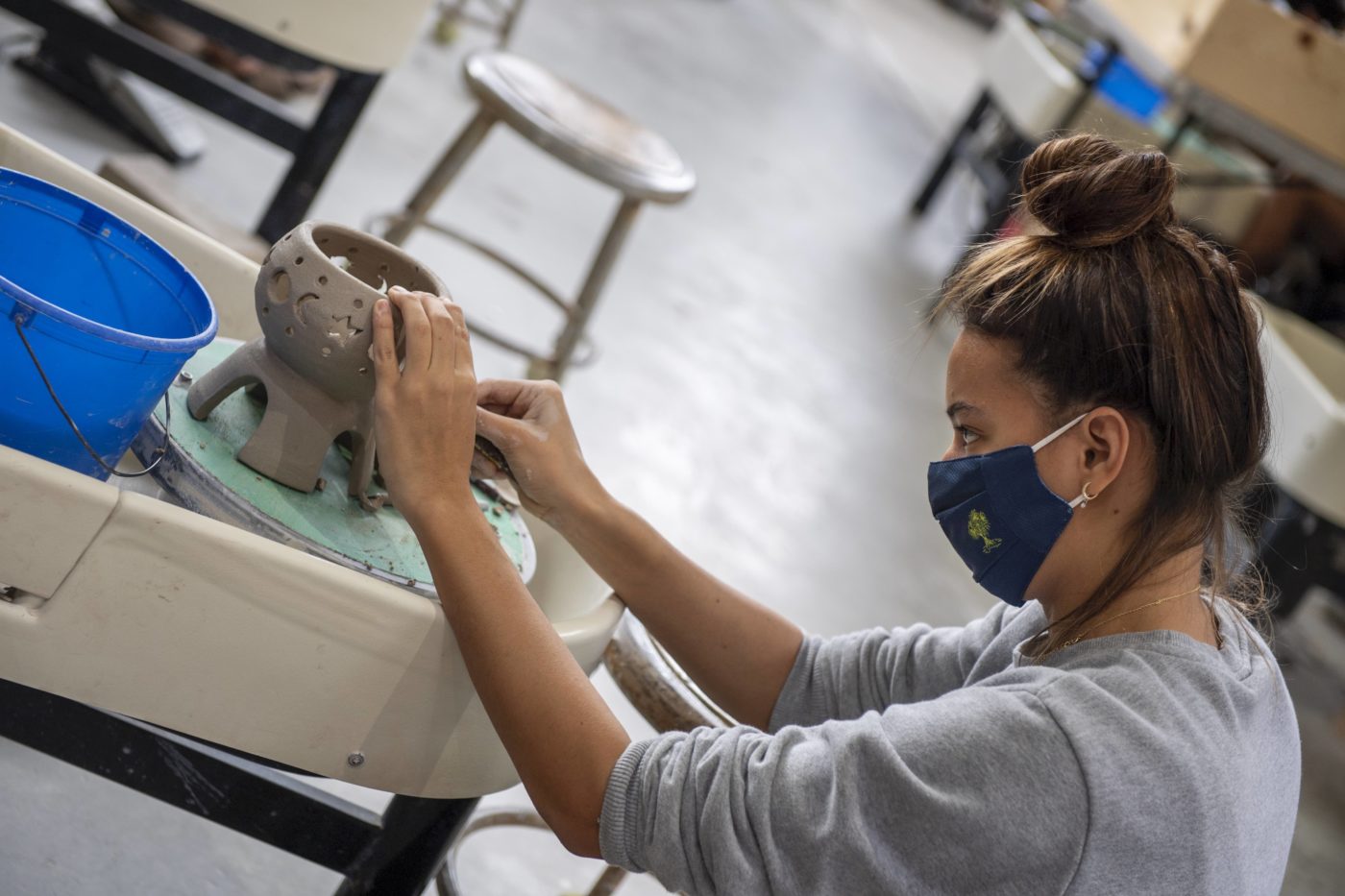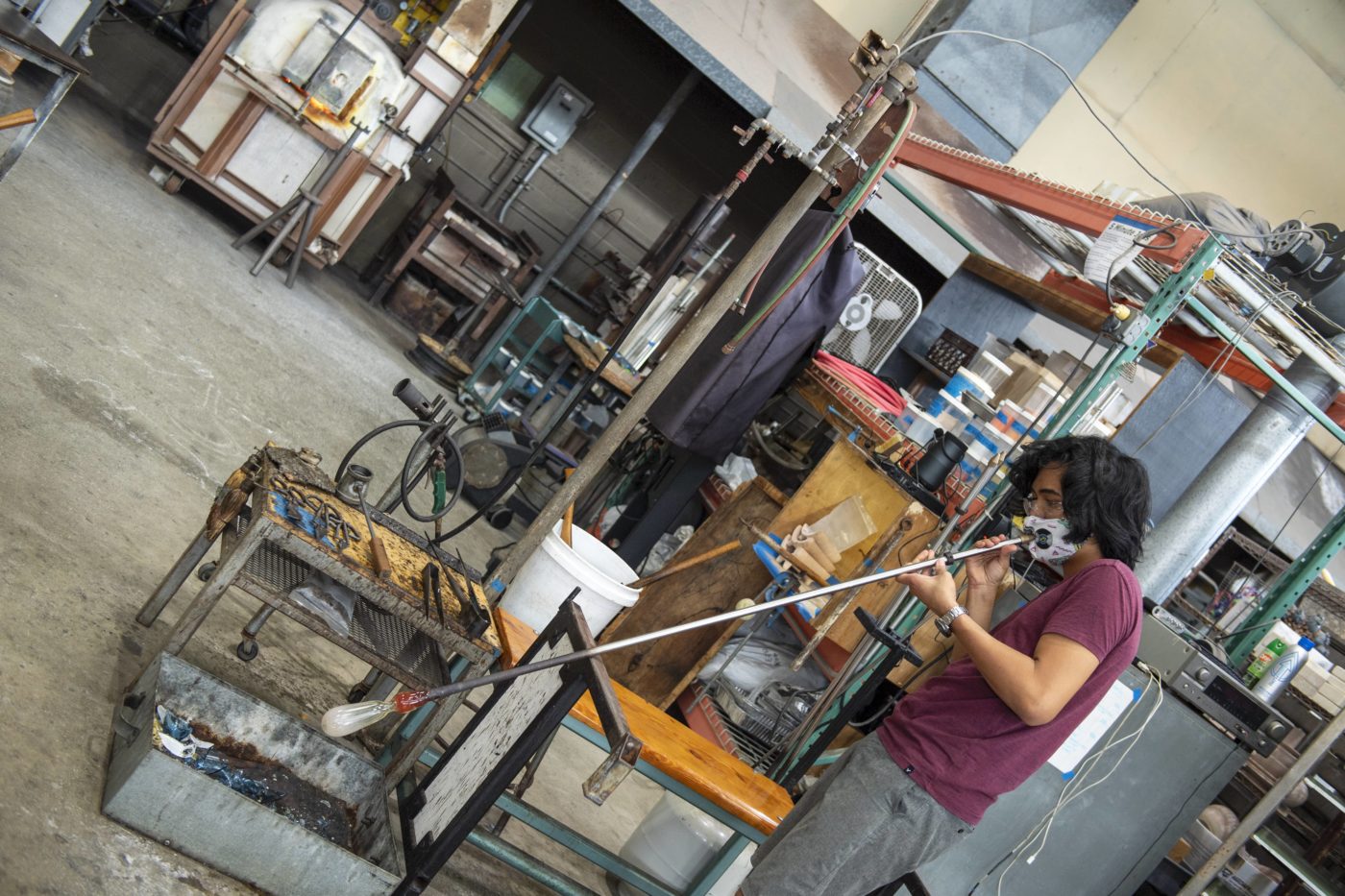Academy arts are in action at the Samuel and Mary Castle Art Center, with students safely embarking on creative endeavors in-person, both in the ceramics studio and the glass shop.
Academy students are enjoying the hands-on experience of wheel throwing during two-hour daily classes, which run for about six weeks. The open-air studio has been reconfigured to allow students to safely spread out with each student on their own workstation, complete with a wheel, tools, materials and clay.
Students start their wheel-throwing journey by learning to make bowls, cups, mugs and vases before moving on to more complex forms, such as teapots and double-walled lanterns, even trying their hand using refined porcelain clay as they progress.
During distance learning, students worked with clay at home, building functional ceramics using hand-building techniques, which Academy art faculty member Dan Harano glazed and fired on campus. Now, students are happy to continue their ceramics experience in the studio.
“Working with clay is grounding, and it’s nice to be outside while working in the studio,” Harano said. “It’s also nice not to be staring at a screen, while getting your hands dirty and being active.”
Another appeal of doing this type of art is the end result.
“There’s something special when you make something and have a physical object in front of you at the end of the day or at the end of the semester,” Harano said. “In other classes, you can take a quiz or do a reflection, but you never see it again. So having that end product, that physical thing, is what really attracts students to this art form.”
Meanwhile, on the other side of the art center, Punahou’s glass shop is also up and running with students safely making glass artwork. Working in small groups, students craft pieces at their own workstations, without the need to share tools.
To prepare for students’ return to the studio, detachable mouth pieces for the glass blowing pipes were created in one of Punahou’s own fabrication labs, the Ken Richardson Learning Lab, so that the pieces could be removed and sterilized between use.
As with the wheel throwing classes, students meet for two hours a day for five to six weeks. To keep the groups small, one half of the class focuses on theory for the day, while the other is in the hot shop practicing. Academy art faculty member Mark Mitsuda ’88 said this intensive schedule allows for a deeper conceptual dive into the theory of glassmaking coupled with extended hands-on time.
Mitsuda said glass differs from other art forms in that the actual glassmaking process is quick, about 40 minutes. So the months or years of experience a student or artist brings to the work bench is expressed in that short time window, unlike a painting that may take weeks or months to complete. “Also, everything is on fire,” Mitsuda said. “I think that’s why this is some students’ favorite class.”






